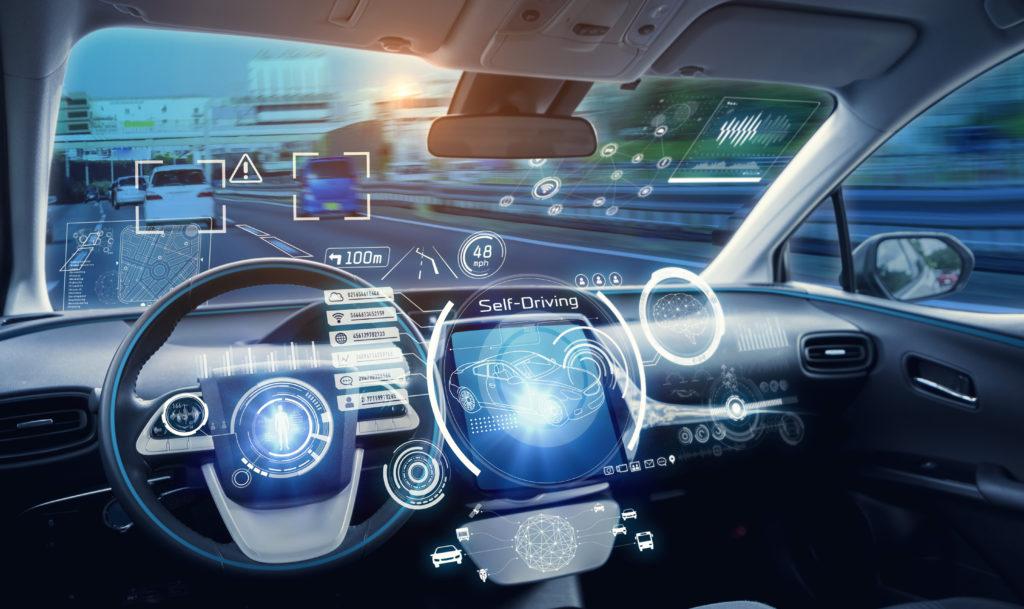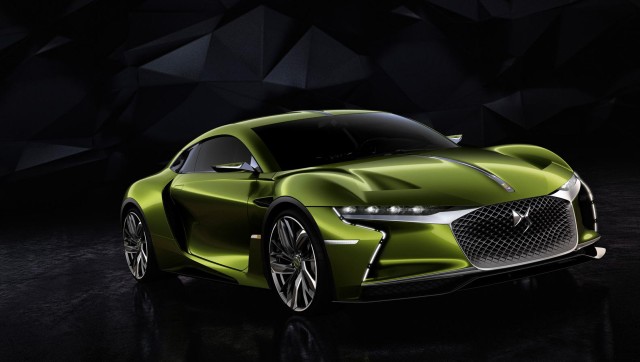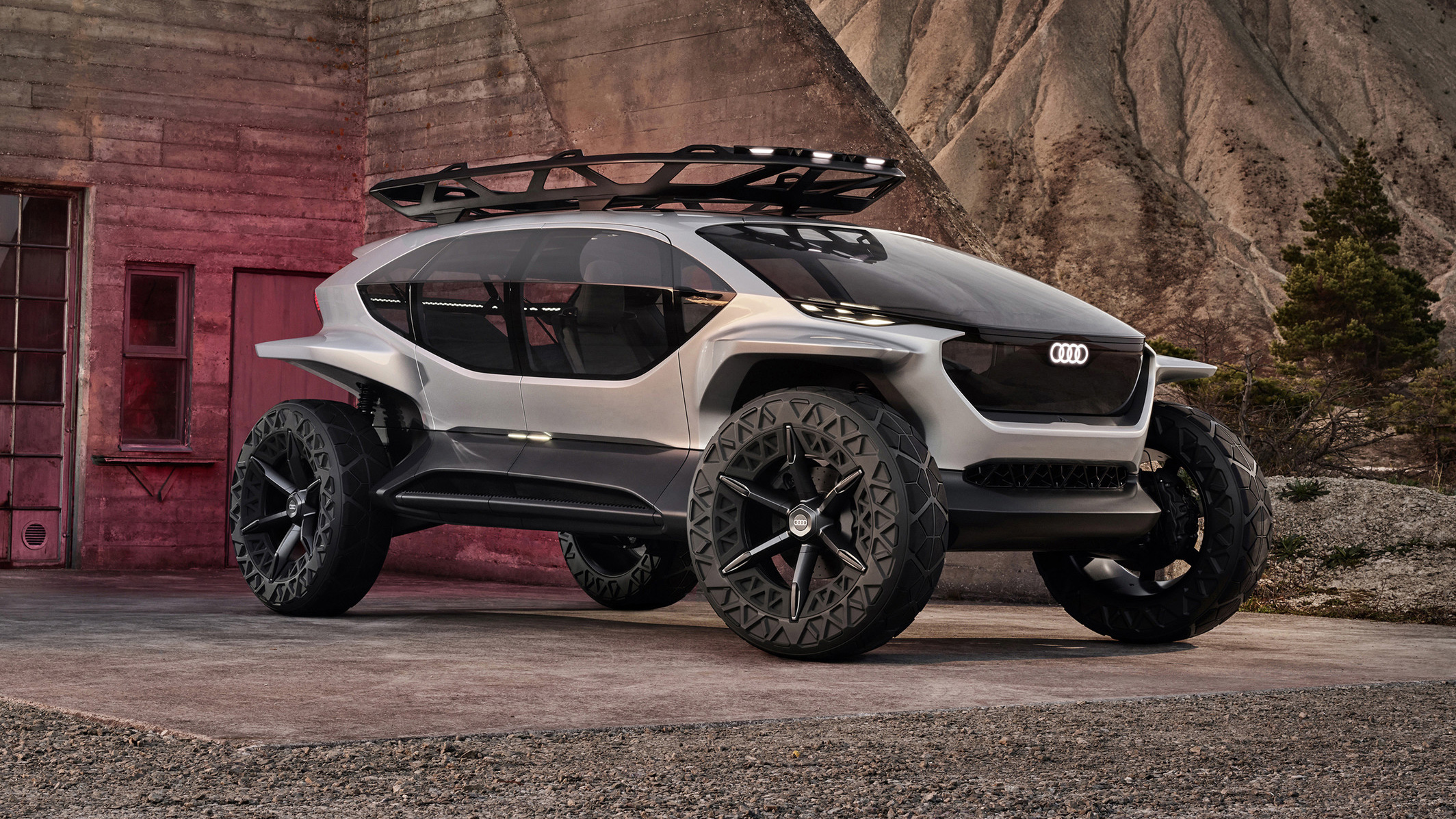Future of Automobiles: 9 designs that have the potential to revolutionise the automobile industry
Each year, the automotive business advances significantly, introducing wonderful new and fascinating technology to automobiles.

- We've compiled a list of the most intriguing technologies, concepts, and impending models for the automobile's future.
- It is certainly unusual among concept automobiles, as it is the only vehicle that combines wheels and legs.
- Another concept from the 2022 CES, Cadillac's InterSpace looks like something straight out of a science fiction film set in the far future.
- However, all of this technology already exists — augmented reality, self-driving capabilities, and noise mitigation — it's just a matter of integrating it properly and safely into vehicles.
- The vehicle would be equipped with more than 40 sensors that would continuously check for safety hazards outside the vehicle, as well as assist the passenger in self-driving circumstances (popularised by Tesla).

Without Tesla's Cybertruck, this isn't a true compilation of futuristic automobiles! This infamous vehicle was unveiled in 2019 but has now been delayed yet again, with a new deployment date of 2023 announced.
The Cybertruck is primarily designed for resilience. It hardens the car's frame with an ultra-hard 30X cold-rolled stainless-steel structural covering. That is a convoluted way of explaining that the car's frame is extremely sturdy. Additionally, this is what results in the car's pointed futuristic look, as cold-rolled metal loses a significant amount of its elasticity and formability.
Despite the now-famous footage showing Musk effortlessly destroying the Cybertruck's glass at the debut, Tesla is saying that the car's robustness extends to the windows. According to the manufacturer, the ultra-strong glass and polymer-layered composite will absorb and redirect force, keeping your windows secure.
Additionally, Tesla claims that the Cybertruck will be capable of towing more than 6,350 kilograms—almost the weight of an average African jungle elephant. That's a lot of amazing metrics, but given its several delays, it may very well achieve them all. Now we simply have to wait and see if it will be released in 2023 or if it will be delayed again.
Advertisement
BMW iX Flow

BMW's iX Flow was among the numerous vehicles unveiled at CES 2022. While it appears to be completely normal, like a car you might pass hundreds of times on a road trip, it is equipped with a really unique party trick. The iX Flow can totally change colour with the push of a button.
This is made feasible by a color-changing e-ink paint. This essentially means that this car is covered in a massive e-reader display comprised of millions of paint-filled microcapsules. Each of these capsules contains white pigments that are negatively charged and black pigments that are positively charged. When the electrical field is altered, the selected pigment rises to the surface, altering the car's colour.
It is not even necessary for the entire car to change colour. BMW showcased it with racing stripes, patches of various colours throughout, and flawless transitions from white to black across the vehicle.
While this appears to be a car straight out of a James Bond film, it is currently simply a concept. BMW has yet to announce whether or not it will commercialise this technology. Additionally, there would be concerns about how the millions of microcapsules would fare in a real-world environment.
Meta Materials HUD

Heads Up Displays (HUD) are a recurring motif in science fiction. At CES 2022, the firm Meta Materials demonstrated this type of technology, utilising holograms to project critical information right into the driver's field of vision. Meta Materials asserts that this would assist the driver in focusing on the road rather than on the vehicle's display consoles.
A HUD eliminates the need for the driver's eyes to adjust to changing brightness levels while switching from the road to the car's instruments and, in theory, improves a driver's reaction time by keeping them focused on the road. However, like with much automotive technology, this is still a long way off and would almost certainly require extensive permission before being properly implanted into cars.
Advertisement
Hyundai Elevate

Hyundai introduced the "Elevate" concept car at the 2019 Consumer Electronics Show. It is certainly unusual among concept automobiles, as it is the only vehicle that combines wheels and legs. This would allow the vehicle to manoeuvre in ways that conventional vehicles cannot, such as climbing stairs to allow a wheelchair user to enter, fitting into tighter parking spaces, or manoeuvring around difficult obstacles.
With these legs, the car might potentially climb and "walk" in areas where wheels are inconvenient. When a tsunami or earthquake strikes, current rescue vehicles are limited in their ability to convey first responders to the debris boundaries. They must then walk the remainder of the distance. "Hyundai Cradle is capable of driving into place and climbing right over flood debris or crumbling buildings," said John Suh, Vice President and Head of Hyundai Cradle.
Canoo pickup

The Canoo Pickup is another vehicle that appears to be rather ordinary from the outside. Apart from the larger-than-average front window, it might easily pass for a typical automobile. Canoo does not have cutting-edge technology or an abundance of screens; instead, it focuses on functionality. The automobile is very modular, allowing you to customise the rooftop attachments, size, and features, as well as extend or retract the pull-out bed, thereby changing the car's size.
This means you may drive a smaller car in town or extend the top and back of the vehicle for maximum storage on a trip. It contains concealed compartments, additional plugs, solar panels, and integrated lighting around the outside of the vehicle—nothing particularly innovative, but modular elements on a car are a terrific idea we rarely see.
Advertisement
DS X E-Tense

DS Automobiles is another company that takes a truly futuristic approach with their concept vehicles. Following Elon Musk's child-friendly naming policy, this model is called the X E-Tense. It's a three-seat design that aims to incorporate technology capable of reforming following a collision and windows that can adjust to the amount of light outside. There are two seats on one side of the car and one additional seat in the back.
The interior is lavishly decorated with intricate decorations, brilliant colours, and a futuristic aesthetic. Obviously, as with many previous concept cars, the majority of this technology does not yet exist. Rather than that, DS wishes to demonstrate where automobiles might go in the future.
Audi AI: Trail

When Audi unveiled the AI: Trail in 2019, it resembled a wild jumble of futuristic technology concepts. Drones, detachable hammock seats, and an abundance of glass are just some of the amenities aboard this concept car, but it does give some intriguing glimpses into the future of automobiles. Along with being an electric vehicle, it would have an antimicrobial, dirt-repellent coating on the armrests and other interior components.
The seats are detachable hammocks that can be used on camping trips and make cleaning a breeze. Additionally, this proposal includes the strange suggestion of drones that follow the car and illuminate the way ahead. All of this feels extremely futuristic, but we're not convinced that Audi's AI: Trail is a viable model for the automobile of the future.
Advertisement
Cadillac InterSpace

Another concept from the 2022 CES, Cadillac's InterSpace looks like something straight out of a science fiction film set in the far future. Cadillac states that the InnerSpace idea is intended to redefine the driving experience by allowing two passengers to focus on their journey rather than on strenuous driving.
The automobile would be entirely autonomous—a feature many automakers have longed for but have yet to achieve—letting the driver concentrate on landscapes or personal duties. Cadillac intends to take entertainment to the next level with this vehicle, utilising Augmented Reality to keep occupants engaged.
The car also includes tyres that decrease sound wave resonance for a more silent and comfortable ride. As is the case with many of the cars on this list, this is a concept, and Cadillac is merely speculating about the future of automobiles. However, all of this technology already exists — augmented reality, self-driving capabilities, and noise mitigation — it's just a matter of integrating it properly and safely into vehicles.
Sony Vision-S 02

Have you ever felt as though your car lacked sufficient screens? As is the case with the majority of concept automobiles these days, Sony appears to be following the Pimp My Ride philosophy, where the more screens you have, the better the car is. With screens in both rear seats and three in the front, Sony is attempting to transform automobiles into media centres. However, the Vision-S 02 is not only promising in terms of enjoyment.
The vehicle would be equipped with more than 40 sensors that would continuously check for safety hazards outside the vehicle, as well as assist the passenger in self-driving circumstances (popularised by Tesla). Sony would also transition to digital mirrors, which include cameras and screens. Sony's idea appears to incorporate a feature not seen in many new cars: the use of Time of Flight cameras to detect facial expressions, gestures, and weariness. This is intended to aid in temperature control and to provide caution about the need for sleep or breaks while driving.
Advertisement